Discover Kerala: Cultural Festivals & Food Experiences You Can’t Miss
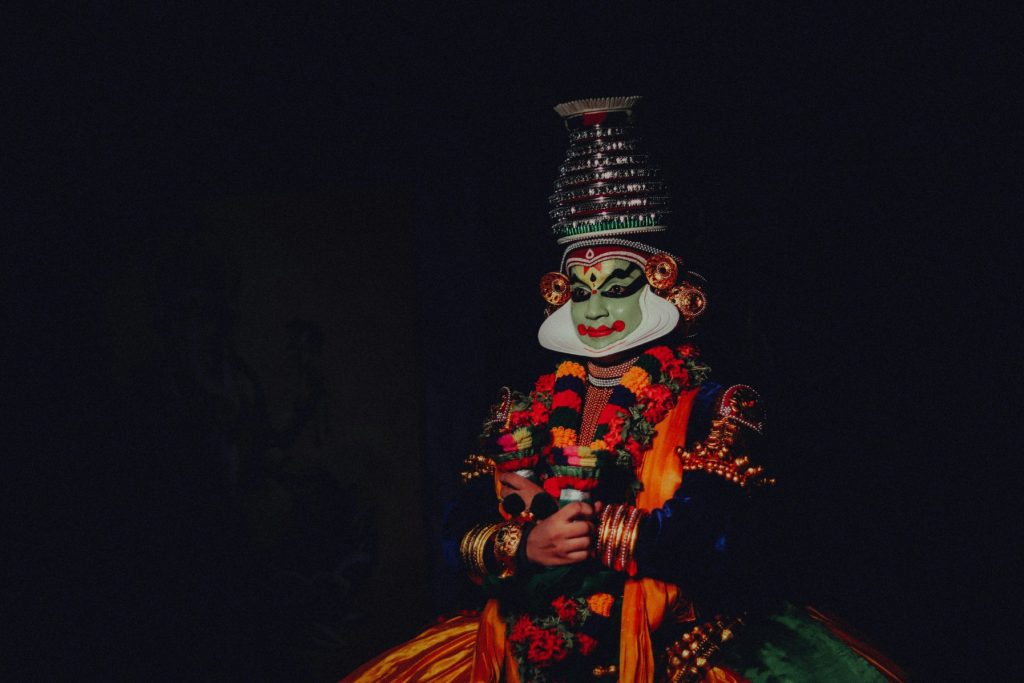
Kerala, also known as “God’s Own Country,” has more to offer than simply just hill stations and backwaters. Kerala has so many cultural treasures that it can be overwhelming to plan a trip. You can uncover the genuine essence of Kerala with the aid of a well-designed Kerala travel planner or itinerary. From stunning temple festivals to delectable cuisine, each area of Kerala offers a distinctive experience. Embracing the local culture makes your Kerala vacation special, whether you’re selecting Kerala tour packages, a Kerala family tour, or even a Kerala honeymoon tour package. 1. Harvest Festivals of the Hills – Wayanad & Idukki While Onam is a state-wide celebration, hill regions like Wayanad and Idukki have their own localized harvest festivals. Tribal communities celebrate the harvest with music, food sharing, and rituals that are unique to the high ranges. Unique Highlight: Traditional cooking in earthen pots, bamboo rice dishes, and herbal drinks. Pro Tip: Visit with a guide who knows the area and can connect you with tribal communities for responsible tourism experiences. 2. Onam – The Festival of Harvest Onam is Kerala’s most famous festival. It honors the harvest season and the legendary King Mahabali. Over 25 vegetarian dishes are served on banana leaves during the lavish feast known as Onam Sadya. The celebration is also highlighted by traditional games, floral carpets, and the well-known boat races. Unique Highlight: One of Kerala’s most colorful events is the Vallam Kali, or snake boat race. Pro Tip: If you plan to visit Kerala during Onam, reserve your trip packages in advance. Local homestays provide the most authentic experience. 3. Aranmula Boat Race – Culture Meets Community Held during Onam, the Aranmula Uthrattathi Boat Race is a spiritual and cultural event, unlike the competitive races elsewhere. Here, the oarsmen sing devotional songs in rhythm while rowing the snake boats in ceremonial fashion. Unique Highlight: The boats are decorated with silk umbrellas and golden embellishments, and the event is more about tradition than competition. Pro Tip: Visit the nearby Aranmula Parthasarathy Temple for a complete cultural experience. 4. Thrissur Pooram – The Festival of Elephants A musical and visual extravaganza is Thrissur Pooram. With golden decorations, majestic elephants parade. An electrifying atmosphere is produced by the rhythmic beats of traditional percussion. Unique Highlight: The fireworks display is unmatched and continues late into the night. Pro Tip: If you are sensitive to loud noises, keep earplugs with you. For convenient access, stay close to the main temple grounds. 5. Theyyam – Dance of the Divine The ritual art form known as “theyyam” is exclusive to North Kerala. Dancers in colorful costumes and elaborate makeup transform into deities during performances. It is both spiritual and artistic. If you’re keen on sustainable tourism in Kerala, attending a village Theyyam is a great way to support local heritage and community-led rituals. Unique Highlight: Witnessing Theyyam in a village shrine provides a genuine, unadulterated Kerala tour guide experience. Pro Tip: For the most impactful performances, attend ceremonies in the early morning or late at night. 6. Vishu – Kerala’s New Year Celebrated in April, Vishu marks the beginning of the new year in the Malayalam calendar. Families set up a Vishukkani—an arrangement of rice, fruits, golden items, and lamps—to be the first thing one sees in the morning. It’s followed by firecrackers, new clothes, and a grand feast. Unique Highlight: The Vishu Sadhya, a festive vegetarian meal, and the tradition of giving money (Vishu Kaineettam) to children. Pro Tip: Visit temples like Sree Padmanabhaswamy during Vishu for elaborate rituals and decorations. 7. Sadya – A Traditional Vegetarian Feast A trip to Kerala would not be complete without taking in Sadya. Sambar, avial, olan, thoran, rice, and desserts like payasam are all part of this elaborate vegetarian meal. It displays the diversity of Keralan cuisine. Planning your trip during festival season? That’s one of the smartest tips and tricks for planning your ultimate Kerala trip—as Sadya is best enjoyed in local homes or temples. Unique Highlight: Each dish balances taste, health, and tradition, offering a wholesome Kerala travel planner experience. Pro Tip: Try Sadya during festivals or weddings. Ask local Kerala tour operators for restaurant recommendations offering authentic flavors. 8. Palada Payasam and Kerala Desserts Kerala’s desserts are a class apart. Palada Payasam, made with rice ada, milk, and sugar, is often served as the grand finale of a Sadya. Other favorites include parippu pradhaman (lentil dessert), unniyappam (rice fritters), and achappam (rose cookies). Unique Highlight: Most desserts are made with jaggery and coconut, offering a healthy twist. Pro Tip: Try temple prasadam versions of payasam, which are considered more authentic and divine. 9. Malabar Biryani – A Royal Treat Kerala’s pride lies in its Malabar Biryani. Tender meat, spices, and fragrant rice combine to create a dish that will never be forgotten. Malappuram and Kozhikode are well-known. Unique Highlight: Malabar Biryani is a family-friendly dish because it is lighter and less greasy than other biryanis. Pro Tip: For the best taste, choose local restaurants rather than tourist ones. Inquire with travel agents about the best places that offer kerala authentic flavors. 10. Toddy and Seafood Delicacies Kerala’s seafood is flavorful and fresh. Must-try dishes include prawn roast, karimeen pollichathu, and fish curry. These dishes go well with toddy, a traditional fermented coconut beverage. Unique Highlight: Seafood prepared with unique spice blends is available in Kerala’s coastal towns. Pro Tip: Enjoy toddy in licensed shops only. Pair it with spicy seafood for a better experience. Seasonal Travel Hook Timing your trip right can elevate your Kerala experience. Festivals in Kerala are deeply tied to specific months, so aligning your visit with these cultural events adds magic to your journey. Visiting in April? Don’t miss Thrissur Pooram, Kerala’s grandest temple festival filled with fireworks, decorated elephants, and traditional music. Traveling in August or September? Plan your trip around Onam for the iconic Sadya feast, Vallam Kali boat races, and vibrant flower carpets. Exploring in December to February? It’s Theyyam
Bali Travel Guide: Your Ultimate Planner for Beaches, Culture & Adventure
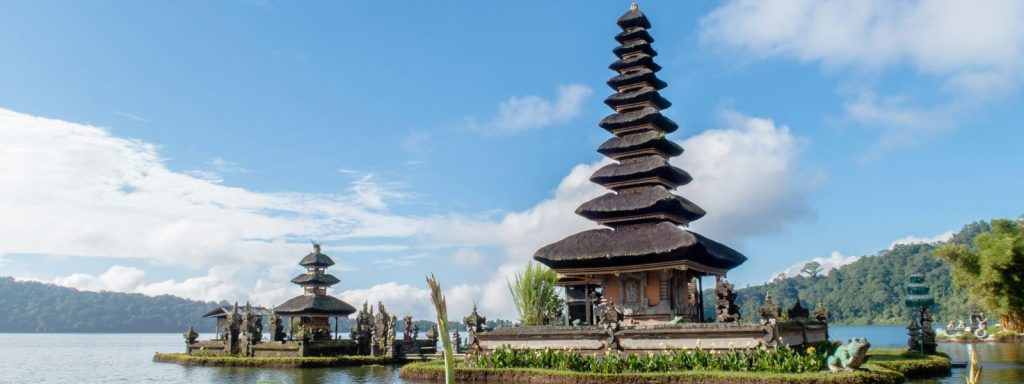
Have you ever wished life had a pause button? Picture yourself barefoot on soft sand, the ocean glowing under a golden sunset, incense drifting from a nearby temple—that’s Bali. More than a destination, it’s an energy, a memory that stays with you.Bali is where yoga mats meet surfboards, jungle hikes end with candlelit dinners, and temples sit just steps from buzzing beach clubs. Whether you’re dreaming of a Bali honeymoon, planning a family getaway, or mapping out your Bali travel guide, the island embraces every traveler with the same warm smile. This 2025 Bali travel guide is going to be your buddy, your Bali trip planner, and tourism guide! By the end of this travel guide, you will have learned how to plan your Bali getaway Reasons to Put Bali on Your 2025 Travel Bucket List Diversity on one island : You can climb a volcano at sunrise, walk through rice terraces at lunch, and sip cocktails at a beach until sunset—all in one day. Value: Infinity pool villas, private beach dinners, spa days… most of the time these are cheaper than a weekend getaway in Europe. Cultural richness: Balinese culture is deeply spiritual. From morning offerings to temple ceremonies, spirituality is everywhere. Convenience for Indian travelers: Affordable flights, Indian food, and visa exemptions make travel seamless. So regardless of whether you are researching Bali holiday packages 2025 or just creating your own Bali itinerary, 2025 could just be the year for you! The Best Time to Visit Bali The first question any smart planner for a Bali holiday is: what is the best time to go ? Dry season (April – October): Sunshine, fabulous beaches, sightseeing and outdoor adventures. Wet season (November – March): Short tropical downpours, just gorgeous, lush landscapes, and fewer crowds. The best value months are April, May and June: Great weather and no holiday rush. If you just want the very lowest deals then those shoulder months are the winners. Flights to Bali from India The bad news – there are no direct flights to Bali from India (yet). But the good news is that it is pretty easy to get there. Transit hubs: you will probably go through Singapore, Kuala Lumpur, or Bangkok. Airlines: Singapore Airlines, Malaysia Airlines, Thai Airways, AirAsia, Emirates. You’ll average a round trip: INR 20,000 – 30,000 if you book in advance. Travel hack: flights out of Kochi, Bangalore, and Chennai are often less than flights from Mumbai and Delhi. Any Bali trip planner will tell you – book a few months out and look for airline fare deals. Where to Stay in Bali Bali is incredible in its place to stay, and you’re not just booking a room – you’re booking an experience. Luxury villas (Ubud, Uluwatu, Seminyak): Private pools, jungle views, and a beautiful dreamy setup are great for a Bali honeymoon itinerary. Mid-range resorts (Nusa Dua, Sanur): Enjoy beachfront staying, that does not cost an arm and a leg; perfect for families. Budget guesthouses & hostels (Kuta, Canggu): Social, cheap, and fun for backpackers. Bali is inexpensive overall, but even luxury villas can be much cheaper than comparable places elsewhere; most have many different options of rooms and rates. Getting Around Bali Bali does not have a metro system or fancy trains—but that is part of the fun. Scooter rentals: INR 400 – 500/day. Very fun, but only do it if you feel comfortable riding on two wheels. Hire a private driver: A more expensive option, but a great option for families or for day-long sightseeing trips. Ride-hailing apps: Grab and Gojek operate the same as Uber. They are easy and convenient apps for short rides. Pro tip: Traffic can get pretty crazy in Bali, so always calculate in buffer time if you need to catch a flight. Best Things To Do In Bali in 2025 All the many tourism guides to Bali mention going to the beach, going to the temple but we’re not stopping there, let’s get your Bali must-do list so much better: Watch the sunset at Tanah Lot – there is nothing like witnessing the sea temple silhouetted against the sunset in a wide open ocean on the horizon. Experience Ubud – rice terraces, Monkey Forest, yoga, and arts market, all in one location. Climb Mount Batur – an early rise and hike will reward you with views above the clouds. Take Day trip to Nusa Penida – infamous cliffs, unknown beaches, and turquoise waters. Go waterfall chasing – Tegenungan, Sekumpul, and Gitgit will have you feeling like you are living in a movie scene. Spa day – a Balinese massage is cheaper than a meal in most countries, and twice as good for you. A Simple Seven-Day Bali Travel Itinerary So if you are not sure where to start, here is a simple (no frills) one-week Bali itinerary: Day 1 – Arrival & sunset at Seminyak Arrive, check-in to your villa, relax, and have dinner on the beach. Day 2 – You will be visiting Ubud Rice terraces, Monkey Forest, coffee plantation visit, dance performance in the evening. Day 3 – Temple/cultural day Tanah Lot at sunset and Kecak dancing at Uluwatu. Day 4 – Adventure day White-water rafting followed by an ATV ride through the jungles of Bali. Day 5 – Nusa Penida Day Tour Visit Kelingking Beach, Angels Billabong and Crystal Bay. Day 6 – Relax & Renew Morning yoga, spa treatment, shopping in Canggu. Day 7 – Last Minute Fun Surf lesson in Kuta or grab some souvenirs before your flight. Bali Honeymoon: Romance in Paradise If you’re here for love, there’s no chance Bali will let you down. We’re talking Floating breakfasts in private pools Couples massage sessions Sunset cruises and candlelit dinners on the sand at Jimbaran Beach. Most Bali honeymoon packages all inclusive come with villas, pampering activities, and extra romantic additions to make your trip easy, so all you have to do is soak it all in. It’s no wonder it is one of
Best Family-Friendly Destinations in Malaysia You Can’t Miss
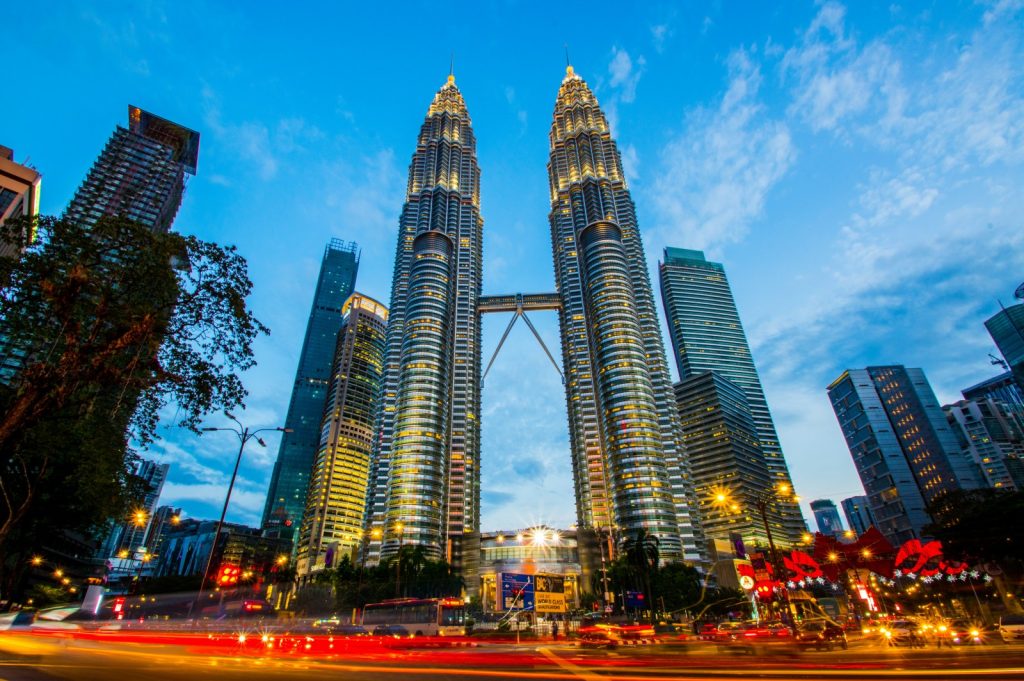
Are you admiring a trip to Malaysia for your upcoming family holiday? Malaysia is one of the friendliest choices for families to travel together. With its blend of nature, culture, and contemporary attractions, it has something for everyone. This Malaysia trip planner identifies the best family friendly destinations in Malaysia,, whether you’re planning a comprehensive itinerary or are just looking for a short vacation. 1. Kuala Lumpur – The Family City Hub Malaysia’s capital is a fascinating fusion of parks, skyscrapers, and historical sites. Families adore Aquaria KLCC, KLCC Park, and the Petronas Twin Towers. Children enjoy KidZania Kuala Lumpur and Sunway Lagoon Theme Park. Parents can discover the local cuisine and lively street markets. Things to Do with Family in Kuala Lumpur Have a picnic at KLCC Park. Visit Petrosains Discovery Centre for engaging science entertainment. For vibrant snacks and shopping, visit Little India. Pro Tip: Plan your visits early in the day. Crowds and heat build up by noon. 2. Putrajaya – A Modern City Putrajaya is the administrative capital of Malaysia. It offers eye-catching family-friendly attractions and is known for its grand architecture, beautiful parks, and peaceful lakes. Things to Do with Family in Putrajaya Take a cruise on Putrajaya Lake. Visit the Putrajaya Botanical Garden. Enjoy family cycling routes and playgrounds at Taman Wawasan. Pro Tip: Combine a visit to Putrajaya with your Kuala Lumpur itinerary as a day trip. 3. Langkawi – Beaches and Cable Cars Langkawi is ideal for a leisurely Malaysia itinerary experience. Families enjoy island-hopping tours, beaches, and the Langkawi Cable Car. The Sky Bridge offers sweeping views, while kids love Langkawi Wildlife Park. Things to Do with Family in Langkawi Go on a mangrove boat tour to spot eagles. Visit Underwater World Langkawi. Spend the evening at Pantai Cenang Beach. Pro Tip: Buy combo tickets for the cable car and Sky Bridge to save money. 4. Penang – Food and Heritage for Families Penang is renowned for its street art beauty and cuisine. Families enjoy walking tours in George Town, Penang Hill rides, and Penang Butterfly Farm. For regional cuisine, Gurney Drive is a must. Things to Do with Family in Penang Kids can explore the Penang Interactive Museum. Go on a street art hunt in George Town. Ride the funicular up Penang Hill. Pro Tip: Use trishaws for short city rides. It’s family-friendly and fun for kids. 5. Ipoh – A Hidden Gem for Family Explorers Ipoh is gaining popularity among families for its laid-back charm, natural attractions, and fantastic food. The Lost World of Tambun theme park is a major hit with kids. Things to Do with Family in Ipoh Spend a day at the Lost World of Tambun (theme park, hot springs, petting zoo). Explore the cave temples like Perak Cave Temple. Enjoy white coffee and snacks in the old town. Pro Tip Book tickets to Lost World in advance, especially on weekends. 6. Genting Highlands – Fun Above the Clouds Only an hour from Kuala Lumpur, Genting Highlands is filled with family-friendly entertainment. Both outdoor and indoor theme parks are very popular. Things to Do with Family in Genting Highlands Visit Genting Sky Worlds Theme Park. Take a ride on the Genting Awana Skyway cable car. Explore Ripley’s Believe It or Not Museum. Pro Tip: The weather is cooler than Kuala Lumpur, so pack a light jacket. 7. Sabah – Adventure in Nature For families who love nature, Sabah is a dream. Explore Kinabalu Park, take a river safari, or visit the Sepilok Rehabilitation Centre to see orangutans. It’s an unforgettable part of any Malaysia travel guide. The beaches in Kota Kinabalu also make it family-friendly. Things to Do with Family in Sabah Visit Lok Kawi Wildlife Park. Go snorkeling at Tunku Abdul Rahman Marine Park. Take a Kinabatangan river cruise. Pro Tip: Book guided tours for safety and a better experience with wildlife. 8. Cameron Highlands – Cool Weather & Strawberry Picking Cameron Highlands is perfect for families needing a break from the tropical heat. The cool climate, tea plantations, and child-friendly farms make it an ideal retreat. Things to Do with Family in Cameron Highlands Go strawberry picking at local farms. Visit the Butterfly Garden and Cactus Valley. Tour the BOH Tea Plantation. Pro Tip: Bring sweaters or jackets as nights can be chilly. 9. Malacca – History That Kids Enjoy Too Malacca is a kid-friendly destination with a wealth of history. The Jonker Street Night Market offers a vibrant experience. Including Malacca in your Malaysia tour guide is a fantastic way to incorporate heritage. Things to Do with Family in Malacca Take a boat ride on the Malacca River. Explore the Maritime Museum. Visit the kid-friendly Melaka Zoo. Pro Tip: Weekends are lively with the night market, weekdays are quieter. 10. Desaru Coast – Beachside Fun with Luxury Comfort Desaru Coast in Johor is a rising destination ideal for family weekend getaways. Things to Do with Family in Desaru Visit Adventure Waterpark Desaru Coast. Enjoy a beach day with family activities. Learn about marine life at Desaru Ostrich and Fruit Farms. Pro Tip: Stay at a family-friendly resort for better package deals. FAQs Q1. When is the ideal time to arrange a family vacation to Malaysia? The best time is between March and October, when the weather is dry. Q2. How many days are sufficient for a family vacation in Malaysia? Usually 7–10 days to explore key destinations. Q3. Is Malaysia safe for kids and families? Yes, it has family-friendly transport and well-maintained attractions. Q4. Can Malaysia also be a romantic getaway? Yes, destinations like Langkawi and Sabah are also perfect for a romantic getaway in Malaysia. Final Thoughts Malaysia is not just a place to go to but a wholesome destination where modern comfort meets cultural richness. From theme parks to heritage towns, there’s something for everyone. With this Malaysia travel planner, you can craft a fun-filled and memorable holiday. To make planning easier, check out curated experiences by The Tarzan Way, where you’ll find trips designed
How to Volunteer in Rural Kerala and Make an Impact
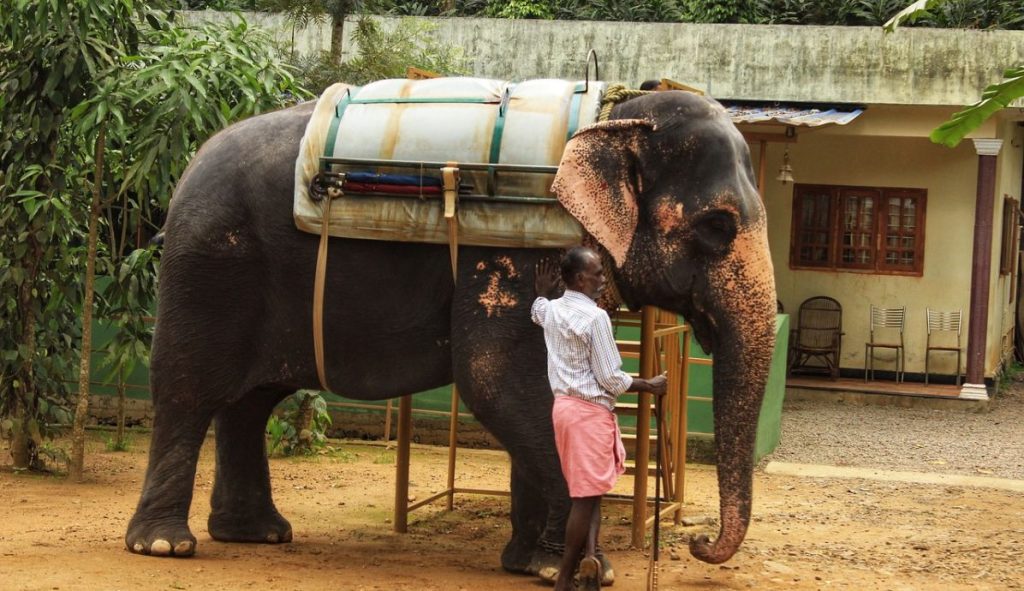
When most people think of Kerala, they imagine houseboats on backwaters or tea gardens on misty hills. But Kerala’s real charm lies in its villages — where culture, traditions, and warm hospitality create unforgettable experiences. Volunteering in rural Kerala not only enriches your trip but also makes a meaningful difference in local lives. This guide will help you make your Kerala itinerary memorable & meaningful for life. 1. Why to Choose Rural Kerala for Volunteering? Volunteering in Kerala’s rural areas gives visitors an opportunity to experience the state apart from experiencing populated tourist locations. The villages offer authentic culture & traditions, friendly hospitality by locals, and untold tales. Volunteering gives you authentic village experiences by immersing you in daily life, unlike traditional Kerala packages. There are multiple ways to contribute—teaching children, supporting women’s groups, or helping in eco-projects. The community is strengthened by each and every action, no matter how big or small it is. Pro Tip: Before you enroll, it is advised to better look for reputable Kerala tour companies or regional NGOs that run such volunteer events. 2. Top Volunteering Opportunities in Rural Kerala (Teaching, Farming, Healthcare & More) There are numerous volunteer opportunities available in Kerala. Amongst all, the most significant opportunities are as follows: Teaching Programs: To support educational initiatives, volunteering to teach computer skills, English or any other subjects in schools is one way to volunteer for the right cause. Sustainable Farming: Encourage organic & sustainable farming projects over inorganic farming in the hill stations of Kerala. Support for Healthcare: To volunteer for the healthcare department, reach out to remote clinics. Help out local medical staff . Eco-Tourism Projects: Support sustainable tourism activities. Encourage eco-friendly responsible travel & sustainable tourism in villages. These kinds of opportunities, which combine leisure and purpose, are trip-worthy to be included in your customized Kerala travel packages. Pro Tip: Select projects as per your preferred skills. There are a lot of activities to be indulged in like from Teaching, farming, to healthcare—choose where you can truly add real value. 3. Best Places to Volunteer in Kerala: Wayanad, Alleppey, Munnar & Kumarakom Your preferred interests will determine the location for volunteering. Each and every region has something special to offer: Wayanad: It is known for its sustainable farming initiatives and for tribal communities that support sustainability.. Alleppey: It defines the combination of ecotourism run by the locals and beautiful backwaters. Munnar: Volunteer on tea plantations and organic farms in the hills. Kumarakom: This area is home to eco-friendly initiatives and bird sanctuaries. Each destination adds depth to your Kerala travel guide, making it more meaningful than a typical Kerala road trip. It has something or the other to experience & learn while volunteering at the same time. Pro Tip: Speak with your Kerala tour planner to mix volunteering with sightseeing for a balanced experience. 4. How to Plan Your Volunteer Trip To ensure a rewarding volunteer experience ,careful examination & better planning is what you all need .Here are some of the key steps that will add value to your volunteer trip, if followed: Decide your duration—whether you want to go for short-term or long-term. To make travel plans to Kerala, get in touch with travel agencies. To combine volunteering with travel, pick trustworthy & informative Kerala tour companies. Mentally get ready for simple authentic living and cultural differences. A reputable Kerala planner can create a fulfilling itinerary that incorporates impact exploration. Pro Tip: Keep a journal when you travel. Writing down your experiences fosters reflection and strengthens bonds with others 5. Unique Experiences To Experience While Volunteering In Kerala, volunteering is more about the reward that is to gain than it is to give back. Anticipate more on following activities that will add value to your volunteering tour : Take part in customary celebrations. During homestays, discover Keralan cuisine. Learn about Ayurvedic methods in rural areas. Hike to undiscovered waterfalls accompanied by locals. These immersive experiences turn your trip into lifelong unforgettable memories, in contrast to generic Kerala family tours or vacation packages with no volunteering . Pro Tip: Carry a travel journal. Documenting your experiences will deepen your connection and help you reflect all the memories to re-live the moment. 6. Balancing Travel and Volunteering altogether Many tourists are curious about how to combine volunteering and leisure time for a better trip. Integration is crucial. By combining volunteer work with touring Kerala’s hill stations, backwaters, and cultural sites ,you can make a significant contribution without missing out on famous locations. Volunteering days can be added to Kerala vacation packages. This guarantees that your Kerala vacation package combines enjoyment and purpose along with a lot of learning thoroughly. Pro Tip: Take advantage of the weekends to explore the destination. For the ideal balance, commit to volunteering during the week days. FAQs Q1. Does volunteering in Kerala require any prior experience? No. Beginners are welcome in many projects. More important than skill is enthusiasm and transparency. Q2. Is it possible to combine volunteering with a honeymoon tour package to Kerala? Indeed. It is definitely possible to add personalized volunteering along with a honeymoon tour package. Q3. How do I find reliable travel agents for Kerala trips for volunteering? Seek out authorized Kerala tour companies that collaborate with neighborhood associations or non-profits communities. Q4. Is volunteering in rural Kerala safe for solo travelers? Yes. Villages in Kerala are known for their hospitality and safety. Just stay connected with your Kerala tour guide. Q5. Can a quick Kerala vacation package include volunteering? Indeed. Volunteering for even two or three days can make your Kerala vacation impactful & memorable. Final Thoughts Your journey becomes more than just a vacation when you volunteer in rural Kerala. It’s a worthwhile opportunity to change lives, embrace customs, and come back with meaningful tales. Whether you are traveling by road, taking a family vacation, or using a Kerala tour operator, volunteering adds value to your trip that will last. If you want your Kerala volunteer journey filled
Best Time to Visit Vietnam for Travelers in 2025
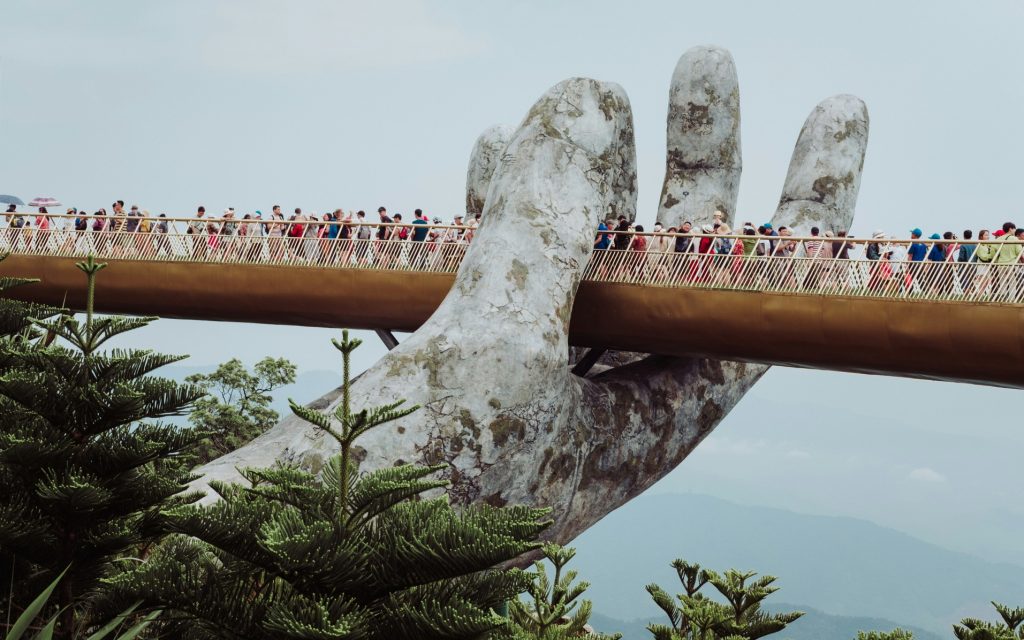
Travelling to Vietnam is an adventurous and daunting experience. Through its smoky mountainous north and its crowded cities, Vietnam has a wide variety of activities and attractions suitable for any kind of traveler. But before you dive into the details of your Vietnam travel itinerary, there’s one essential question to answer first: When is the best time to visit Vietnam in 2025? The climate in Vietnam is special in the sense that the nation extends over 1,000 miles in length between the north and the south. This forms three different climatic zones, i.e., the most auspicious seasons to visit, depending on the part of the land you are sightseeing. A properly organised trip planner to Vietnam will make your trip as fruitful as possible because they will match your activities with the best seasons. In this Vietnamese travel guide, we’ll explore seasonal highlights, regional variations, festivals, and tips to make your Vietnam trip planning smoother. Whether you’re crafting a Vietnam honeymoon itinerary, a family vacation plan, or a solo adventure, this guide has you covered. Understand the Vietnam Climate Before finalizing your Vietnam travel itinerary, it’s important to understand how weather patterns vary across the country. The regions of Vietnam are three: Northern Vietnam (Hanoi, Sapa, Ha Long Bay): There are four seasons: spring, summer, autumn, and winter. Winters (December to February) can be cold, particularly in mountainous places such as Sapa. Summers (May- August) are hot, humid, and sometimes have heavy rains. The Central Vietnam (Da Nang, Hoi An, Hue): Warm weather throughout the year tropical climate. Likely to typhoons and downpours during September and November. Southern Vietnam (Ho Chi Minh City, Mekong Delta, Phu Quoc): Warm and humid year-round. Separated into the dry season (November to April) and the rainy season (May to October). By aligning your Vietnam holiday guide with these climate zones, you can avoid weather-related disruptions while enjoying the country at its best. Best Time to Visit Northern Vietnam Northern Vietnam is a natural and cultural treasure trove, having it all, cities with their colored lights and mountains covered with mist. Ideal Months: October -April. These months are cool and comfortable, thus an ideal time to sightsee and do other activities outdoors. The months of October and November have clear skies and would be the best moments to be taken around Ha Long Bay or traveling in Hanoi. During winter months (December to February), there is a different kind of appeal, and in Sapa, it may be misty and occasionally there is a snowfall in the higher places. The month of spring (March to April) is lovely as flowers begin to bloom and there are celebrations. Must-Do Activities: Visiting the ancient streets and cuisine of Hanoi. Take a romantic Ha Long Bay cruise, perfect for couples on a Vietnam honeymoon itinerary. Hike across the Sapa terraced rice fields to have stunning scenery. Pro Tip: Tet, the Lunar New Year in Vietnam, generally occurs in the late month of January or February. It is a spectacular cultural adventure, and transportation and hotels are already booked several months beforehand, so reserve early. Central Vietnam Best Times to Visit The place is a country that boasts of cultural landmarks, historic cities, and beautiful beaches. Most suitable Months: February to August. It is also the time of year when the weather in the country is dry and sunny, and therefore, beach vacations and outdoor exploration are perfect. This would also be a perfect opportunity to explore Hoi An Ancient Town and the imperial monuments of Hue without fear of getting drenched by rain. Hoi An Lantern Festival, conducted every month, is particularly magical during clear weather. Must-Do Activities: Take a break on immaculate beaches such as My Khe Beach in Da Nang or An Bang Beach in Hoi An. Stroll in the by-lanes of Hoi An, illuminated with lanterns. Hue, the royal city of Vietnam, with the Imperial City and royal tombs. Visit My Son Sanctuary, which is also a UNESCO World Heritage site displaying the ancient Cham ruins. Travel Tip: Central Vietnam is prone to typhoons and flooding, especially in September to November, and so should not be visited at all. Best Time to Visit Southern Vietnam Southern Vietnam is a combination of bustling city life and all-natural immersion. Best Months: November-April. These are dry months in the year, and the weather is sunny, ideal in case people need to travel to Ho Chi Minh City, have boat tours in the Mekong Delta, or go to the beaches at Phu Quoc Island. Must-Do Activities: Tour the Tan Cu Chi Tunnels and gain knowledge about the history of the Vietnam War. Explore the floating markets of the Mekong Delta to have a glimpse of the local life. It is also about unwinding on the pristine white-sanded beaches of Phu Quoc and having a taste of seafood. Travel Tip: The rainy season lasts between May and October, although showers are normally brief and appear in the late afternoon thus they will not get your plans spoiled entirely. Month-by-Month Guide for 2025 Here’s a quick breakdown to help with your Vietnam travel planner: January: The Northern part is cool and dry, and festal Tet celebrations are on their way. February: Good in every part, good time to get outdoors. March: Hot and sunny, great in central Vietnam, and green hiking in the north. April: Beautiful climate all over the country, wonderful to sightsee and explore the outdoors. May: The rainy season begins in the south, but central and northern areas are always good places to visit. June-July: It is the high season of the beach season in central Vietnam, but somehow it becomes crowded. Sample Vietnam Honeymoon Itinerary The diversity of Vietnam makes it a great honeymoon country. Here’s a suggested 10-day Vietnam honeymoon itinerary: Days 1-3: Begin in Hanoi and explore the cultural sites, and spend 3 days on a luxury cruise in Ha Long Bay. Day 4-5: Fly to Da Nang, wander Hoi An with its romanticising lantern-lit
How to experience Malaysian culture through festivals & food
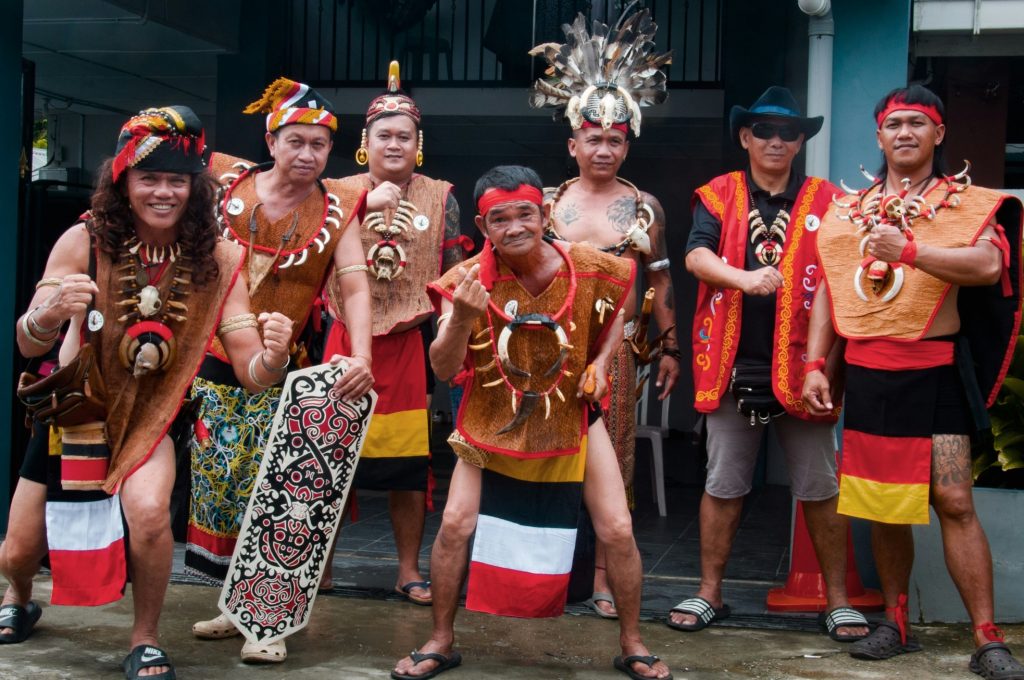
Ever wondered what it feels like to celebrate life every single day? That’s exactly what Malaysia offers. Picture streets glowing with lanterns during Lunar New Year, the air filled with the smell of satay and nasi lemak, and people from different cultures dancing, praying, and sharing food. Malaysia isn’t just a destination—it’s a living, breathing festival. And if you’re planning a trip, the best way to truly experience it is through its celebrations and flavors. Whether you’re searching for a Malaysia trip planner, looking for a Malaysia tour guide, or simply browsing a Malaysia travel itinerary, this blog will help you plan your journey. Think of it as your friendly Malaysia holiday guide, something to show you not only where to go but also how to experience Malaysia the way locals do. So, let’s jump into the world of food, festivals, and culture, and build your perfect Malaysia vacation guide for 2025. Why Choose Malaysia for a Cultural Trip? When people think about traveling in Asia, countries like Thailand and Singapore often come to mind. But Malaysia is like a hidden gem. It’s modern yet traditional, simple yet exciting. You’ll find tall skyscrapers in Kuala Lumpur, quiet beaches in Langkawi, and lush green rainforests in Sabah, all in one country. But the real magic of Malaysia lies in its people and their traditions. Malays, Chinese, Indians, and indigenous groups coexist here, creating a unique blend of cultures. That’s why every festival is celebrated with enthusiasm, and every meal tells a story. If you’re still deciding, let me give you a pro tip: A good Malaysia travel planner will always highlight culture and food as the heart of the journey. And that’s exactly what we’re going to explore today. Why Festivals Are the Heart of Malaysia Festivals in Malaysia are not just events. They are grand celebrations filled with music, colors, dance, and of course, food. Whether you’re traveling with friends, family, or on a romantic getaway in Malaysia, festivals give you memories you’ll never forget. Here are some of the biggest and most meaningful celebrations you should include in your Malaysia trip itinerary: 1. Chinese New Year When? January or February (dates vary) Where? All across Malaysia, especially in Kuala Lumpur and Penang This is one of the biggest festivals in Malaysia. Streets are decorated with red lanterns, dragon dances take over the roads, and families come together to celebrate. As a traveler, you’ll enjoy parades, fireworks, and delicious food like dumplings and sticky rice cakes. If you’re working with a Malaysia trip guide, they’ll likely recommend visiting Petaling Street in KL during this time. 2. Hari Raya Aidilfitri When? After Ramadan (varies by Islamic calendar) Where? Nationwide Hari Raya marks the end of the fasting month of Ramadan. Families wear traditional clothes, houses are decorated, and open houses invite friends and strangers alike. Yes, you can walk into someone’s home, enjoy their food, and be treated like family. Don’t miss traditional Malay dishes like rendang, ketupat (rice cakes), and satay. For food lovers, this festival is a dream come true. A Malaysian travel guide would say: if you want to experience true Malaysian hospitality, this is the best time to visit. 3. Thaipusam When? January or February Where? Batu Caves, Selangor Thaipusam is a Hindu festival that is both spiritual and visually stunning. Thousands of devotees walk barefoot up to the Batu Caves, carrying decorated offerings called “kavadi.” As a traveler, it’s a powerful and unforgettable experience. If your Malaysia vacation guide includes Selangor, make sure you add Thaipusam to your list. 4. Deepavali (Diwali) When? October or November Where? Little India in Kuala Lumpur, Penang Deepavali, the Festival of Lights, is celebrated by the Indian community. Houses glow with oil lamps, temples are beautifully decorated, and you’ll see fireworks lighting up the night sky. Food plays a big role here too, think sweets like ladoos and gulab jamun. A good Malaysia holiday guide will recommend exploring Brickfields (Little India in KL) during this festival. 5. Gawai Dayak When? June Where? Sarawak, Borneo This is a harvest festival celebrated by the indigenous Dayak people. It’s less touristy but gives you an authentic taste of Malaysia’s cultural diversity. There’s traditional dancing, rice wine, and lots of local food. A Malaysia trip planner can help you arrange village homestays during Gawai to truly experience the culture. 6. George Town Festival When? August Where? Penang This arts and culture festival celebrates Penang’s UNESCO World Heritage site with performances, exhibitions, and street shows. It’s perfect for creative travelers who want to see Malaysia’s modern cultural side. Best Festivals in Malaysia 2025 Highlights Festivals in Malaysia are closely tied to food. Every celebration comes with dishes that represent love, prosperity, or tradition. But even outside of festivals, Malaysia is a foodie’s paradise. A good Malaysia travel guide will always highlight the country’s food culture because it’s something every traveler falls in love with. In fact, many tourists say that authentic Malaysian food experiences were the highlight of their trip. Here’s a closer look at Malaysia’s food culture: Street Food in Malaysia: A Flavorful Adventure Street food is the heartbeat of Malaysia. From Penang’s hawker stalls to Kuala Lumpur’s night markets, food is everywhere. Nasi Lemak → Imagine starting your morning in Kuala Lumpur with a paper-wrapped nasi lemak from a roadside stall. The coconut rice is warm, the sambal has the perfect kick, and the city is just waking up. This is breakfast, Malaysian style. Char Kway Teow → The best way to taste this stir-fried noodle dish is in Penang, especially at the Gurney Drive hawker center. You’ll hear the wok tossing, smell the smoky aroma, and taste prawns so fresh they almost melt. Satay → In the evenings, head to Kajang near Kuala Lumpur, known as Malaysia’s “Satay Town.” Grilled meat skewers dipped in peanut sauce taste even better when shared at an open-air stall. Roti Canai → Step into a local “mamak” café, usually open 24/7, and order roti canai
Is Thailand Good for a Workation? Best Places to Work and Play
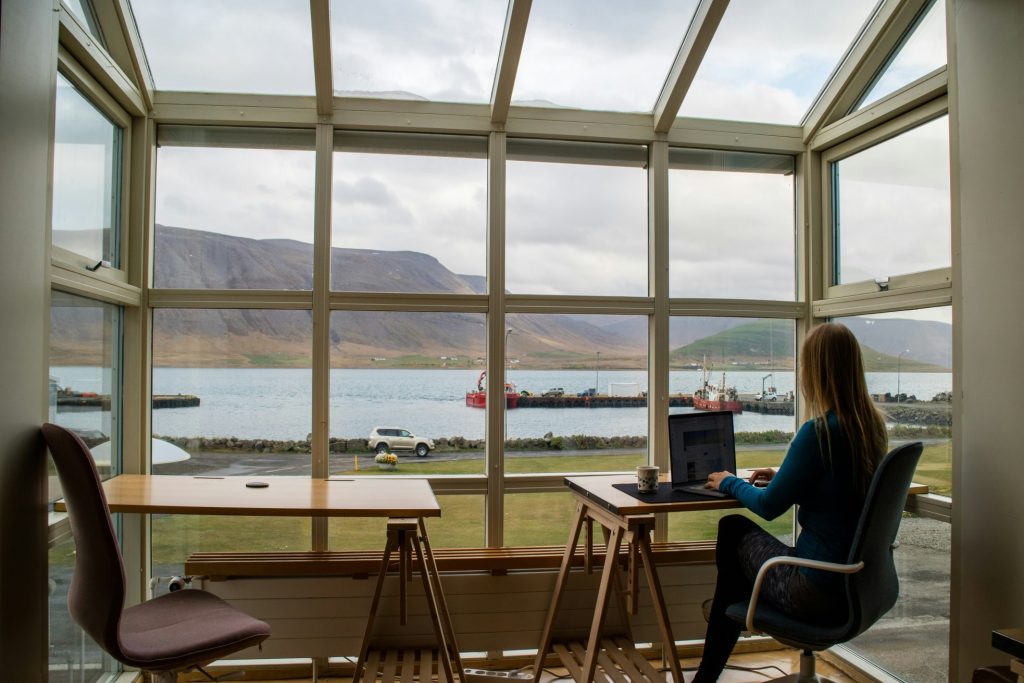
Imagine this: You’re starting your morning with a video call from a rooftop café in Bangkok, pausing at noon to grab spicy noodles from a street food stall, and wrapping up your day with your laptop closed as the sun sinks into the ocean on a Thai beach. That’s not a vacation, it’s a workation in Thailand. And yes, it’s easier than you think. But is Thailand good for a workation? The short answer: Yes! Absolutely. Thailand is one of the best places in Asia for remote workers, digital nomads, and people who want to mix productivity with fun. With its reliable internet, countless coworking spaces, budget-friendly lifestyle, and endless places to explore, Thailand is a dream come true for workation seekers. This Thailand travel guide will show you why the country is a dream spot for both work and play. From bustling coworking hubs in Bangkok to peaceful beaches in Phuket, it’s no wonder Thailand is loved by remote workers and digital nomads worldwide. Whether you’re curious about remote work in Thailand, need a Thailand coworking guide, or simply want tips for creating your own flexible itinerary, this blog has everything you need to start planning your trip Why Choose Thailand for a Workation? A workation isn’t just about finding Wi-Fi. It’s about comfort, cost, lifestyle, and balance. Here’s why Thailand stands out: Affordable Living: Food, transport, and even rent are much cheaper compared to Western countries. Delicious Food: Thai cuisine is world-famous, from Pad Thai to spicy curries. Street food costs just a few dollars and tastes amazing. Great Internet & Coworking Spaces: Thailand is one of the top digital nomad hubs in Asia, with plenty of cafes and coworking spots. Warm Hospitality: The locals are friendly and welcoming, making it easy to feel at home. Diverse Locations: From bustling Bangkok to peaceful islands like Koh Samui, you can choose the vibe that suits you. Visa Options: Thailand offers tourist visas, long-term visas, and even special visas for remote workers. Choosing the Best Cities in Thailand for a Workation When you plan your workation with a Thailand vacation planner or a Thailand trip guide, it’s important to choose the right city. Each city in Thailand offers a different lifestyle. 1. Bangkok – The City That Never Sleeps Why Bangkok? Bangkok is the capital and heart of Thailand. It’s modern, lively, and full of opportunities. The city is great for people who love urban life. Workation Benefits: Countless coworking spaces like The Hive, WeWork, and Hubba. Super-fast internet. Excellent transport system (BTS Skytrain, MRT). Huge variety of cafes and restaurants. Play: When work is done, explore the Grand Palace, Wat Arun, and enjoy rooftop bars with breathtaking skyline views. A good itinerary for Bangkok would include floating markets, street food tours, and a cruise on the Chao Phraya River. 2. Chiang Mai – The Digital Nomad Capital of Asia Why Chiang Mai? Surrounded by mountains and temples, Chiang Mai is peaceful, affordable, and very popular among remote workers. Workation Benefits: Low cost of living. Calm environment with less traffic compared to Bangkok. Dozens of coworking spaces like Punspace and Hub 53. Play: Visit the famous Doi Suthep Temple, explore night markets, and enjoy jungle treks. Chiang Mai is also known for its annual Lantern Festival, which is magical. 3. Phuket – Work with a Beach View Why Phuket? Phuket is Thailand’s largest island and is famous for its beaches, nightlife, and luxury resorts. Workation Benefits: Plenty of beachside cafes and coworking lounges. A good balance of relaxation and entertainment. Great flight connections to Bangkok and international destinations. Play: Spend evenings at Patong Beach, take island-hopping tours to Phi Phi Islands, or relax at Kata and Karon beaches. 4. Koh Samui – Tropical Paradise for Long Stays Why Koh Samui? Koh Samui is a quieter, more peaceful island compared to Phuket, but it still has modern amenities. Workation Benefits: Seaside coworking spaces like BeacHub. Calm atmosphere, perfect for focus. Wellness retreats, yoga, and spas. Play: Relax at Silver Beach, explore Ang Thong Marine Park, or hike to waterfalls like Na Muang. 5. Krabi – Adventure and Nature Combined Why Krabi? If you want a mix of adventure, natural beauty, and beach life, Krabi is perfect. Workation Benefits: Affordable accommodation. Calm and less crowded than Phuket. Cafes and restaurants with great Wi-Fi. Play: Climb the 1,200 steps to Tiger Cave Temple, go kayaking, or explore the famous Railay Beach. Must-Visit Places While on a Workation A good Thailand travel guide isn’t just about work; it’s about the fun too. Here are the must-visit spots for every traveler: Bangkok: Grand Palace, Wat Pho, Chatuchak Market. Chiang Mai: Elephant Nature Park, Doi Inthanon, Night Bazaar. Phuket: Big Buddha, Phi Phi Islands, Bangla Road nightlife. Krabi: Railay Beach, Ao Nang, Four Islands Tour. Koh Samui: Fisherman’s Village, Big Buddha Temple, waterfalls. Pro Tip: Mix work with travel. Plan short weekend getaways to nearby cities or islands using a Thailand vacation guide. Beyond Sightseeing: Experiences to Try Thai Cooking Classes: Learn to make Pad Thai, Tom Yum, or Green Curry. Massage & Wellness: Thai massage is world-famous, affordable and relaxing. Island Hopping: From Phuket or Krabi, visit small, hidden islands. Festivals: Experience Songkran (Thai New Year water festival) or Loi Krathong (Lantern Festival). Adventure Sports: Go scuba diving, snorkeling, rock climbing, or jungle trekking. A Sample Thailand Workation Itinerary (2 Weeks) If you’re new to Thailand, here’s a simple Thailand trip planner for your first workation: Day 1–3: Bangkok – Acclimate, explore temples, and try local food. Work from a coworking space in Sukhumvit. Day 4–7: Chiang Mai – Morning work sessions, evenings exploring temples and markets. Weekend jungle trek or elephant sanctuary visit. Day 8–11: Phuket – Work near the beach, island-hop in free time. Enjoy nightlife in Patong. Day 12–14: Krabi or Koh Samui – Balance work with beach relaxation. Perfect ending to your Thailand workation. This balanced plan ensures productivity and fun while letting you explore
How to Experience Thai Wellness Retreats and Stay Fit While Traveling Thailand
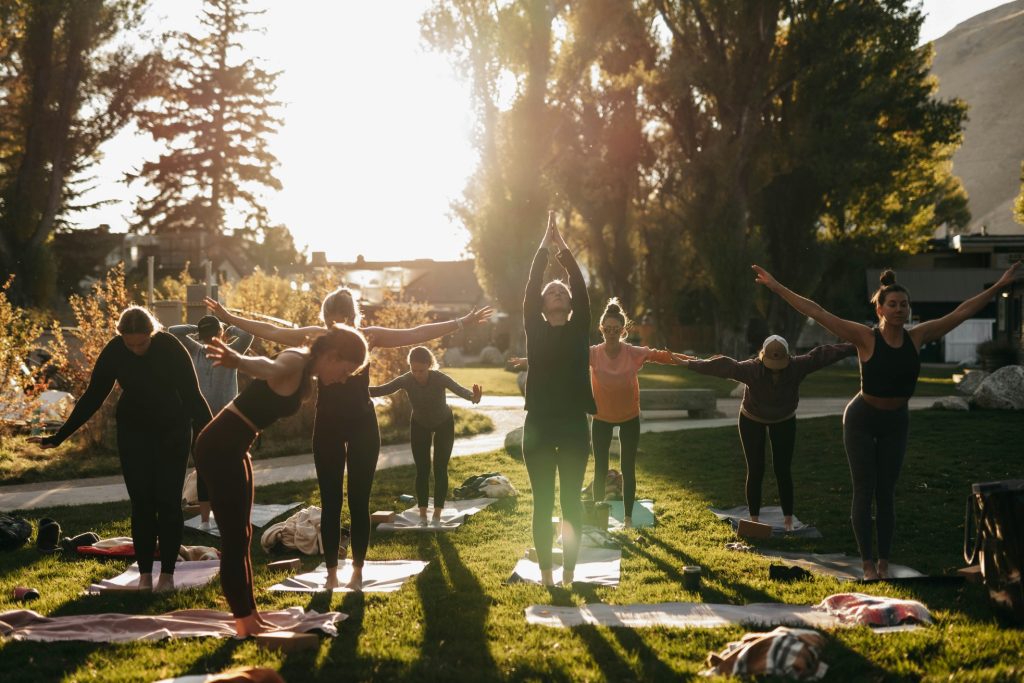
Did you know Thailand is ranked among the top wellness destinations in the world? Instead of returning from a trip tired, imagine coming back healthier, calmer, and more energized—this is what Thailand’s wellness retreats offer. Thailand is not limited to beaches and temples. From yoga retreats to therapeutic spas, it offers healing retreats that balance body, mind, and soul. A more satisfying and healthful vacation is guaranteed when you include wellness activities in your Thailand itinerary. Learn about fitness activities, mindful travel advice, and wellness retreats in Thailand 2025 with this Thailand travel guide. 1. Yoga and Meditation Retreats in Thailand Some of the world’s top yoga centers are located in Thailand. Every day, yoga and meditation retreats are offered in locations like Koh Samui, Phuket, and Chiang Mai. They bring together thorough curricula, knowledgeable instructors, and serene settings. Examples: Visit Wat Suan Mokkh in Chaiya, famous for its 10-day silent meditation retreats, or try Vikasa Yoga in Koh Samui, known for blending traditional yoga with tropical beach vibes. Pro Tip: To get the best deals, especially during the busiest travel times, book your retreat well in advance. 2. Thai Massage and Healing Therapies Without experiencing Thailand’s traditional healing methods, a visit would not be complete. Thai massage combines stretching, assisted yoga, and acupressure. Aromatherapy, herbal compresses, and detoxification procedures are frequently added by wellness resorts. Examples: Try Health Land Spa & Massage in Bangkok or Oasis Spa in Chiang Mai, both highly recommended for authentic Thai massage experiences. Pro Tip: Choose certified spas recommended in trusted Thailand tour guides to ensure authentic experiences. 3. Wellness Resorts and Luxury Retreats Many Thai wellness resorts focus on detox, spa therapy, and mindfulness. Top ones include Chiva-Som in Hua Hin and Kamalaya in Koh Samui. These Thailand detox retreats also offer personal wellness consultations, organic food, and exercise Examples: Consider The Sanctuary Thailand on Koh Phangan for a nature-focused detox retreat or Chiva-Som for luxury wellness services. Pro Tip: Seek out resorts that provide packages specifically designed to meet your health objectives. 4. Fitness Activities Alongside Wellness Don’t overlook outdoor fitness opportunities when planning your trip to Thailand. Stay fit with guided hikes in Chiang Mai, Muay Thai camps, or morning runs in Phuket. These pursuits strike a balance between wellness and adventure. Examples: Explore Doi Suthep-Pui National Park hiking trails near Chiang Mai, train at Tiger Muay Thai camp in Phuket, or run along Patong Beach. Pro Tip: Carry lightweight fitness gear so you can continue workouts even while traveling. 5. Healthy Thai Food and Nutrition Thailand has a varied culinary scene. In addition to street food, there are lots of organic restaurants, detox juice bars, and vegan cafés. Foods like Tom Yum soup and Som Tum (papaya salad) are tasty and nourishing. Examples: Dine at May Kaidee’s Vegetarian Restaurant in Bangkok or visit Detox Delight in Chiang Mai for wholesome, organic meals. Pro Tip: If you have a special diet, make a shortlist of restaurants that serve vegetarian or gluten-free options when organizing your Thailand vacation itinerary. 6. Mindful Travel and Spiritual Experiences In Thailand, spiritual as well as physical well-being are valued. Join silent retreats or practice mindful meditation at Buddhist temples. These encounters help you balance your travel schedule and bring inner peace. Examples: Try meditation sessions at Wat Umong in Chiang Mai, known for its peaceful forest surroundings. Pro Tip: For Offbeat Thailand experiences, dress modestly and learn temple etiquette in advance. 7. Muay Thai Training Camps Muay Thai combines exercise and culture for tourists looking for a distinctive workout. Classes for all skill levels are offered at training camps located in Bangkok, Phuket, and Koh Samui. You learn Thailand’s national sport while getting a great workout. Examples: Train at Sitsongpeenong in Bangkok, Tiger Muay Thai in Phuket, or Lanna Muay Thai in Chiang Mai for authentic and effective camps. These are among the best Muay Thai training camps for beginners. Pro Tip: Before committing to full training programs, beginners should start with short-term courses. 8. Island Detox and Eco-Retreats The peaceful islands of Thailand are ideal for detox getaways. There are eco-resorts on Koh Phangan and Koh Samui that specialize in plant-based diets, digital detoxes, and mindfulness classes. They let tourists get back in touch with nature and unplug from screens. Examples: Stay at Banyan Tree Samui for luxurious detox programs or explore The Sanctuary Thailand on Koh Phangan for eco-conscious wellness. These eco-wellness resorts in Thailand offer sustainable, rejuvenating experiences for mindful travelers. Pro Tip: Check if the retreat includes eco-friendly practices like recycling and solar energy for a more sustainable stay. 9. Hot Springs and Natural Healing Spots Numerous natural hot springs in Thailand promote rest and recovery. The healing mineral waters of Pai, Krabi, and Ranong are well-known. To relax and regain energy after a long, heavy journey, soak in hot springs. Examples: Visit Tha Pai Hot Springs near Pai, Raksawarin Hot Springs in Ranong, or San Kamphaeng Hot Springs near Chiang Mai for therapeutic mineral baths. Pro Tip: Carry a reusable water bottle and hydrate well after hot spring sessions. 10. Evening Wellness Markets and Local Experiences Evening wellness markets are held in certain Thai cities. They sell natural skincare products, herbal teas, organic snacks, and handcrafted wellness items. The wellness scene in Chiang Mai is especially thriving. These marketplaces give your Thailand trip itinerary a more cultural feel. Examples: Explore the Saturday Night Market in Chiang Mai for wellness products and local crafts. Pro Tip: Shop early in the evening when markets are less crowded. FAQs Q1: What is the cost of a wellness retreat in Thailand? Retreats differ greatly. While luxury resorts can cost $500 or more per day, budget options might start at $50. Q2: Is it possible to incorporate sightseeing into wellness retreats? Absolutely, the majority of programs give you free time to visit well-known locations from your Thailand travel itinerary. Q3: Is prior experience required for yoga or meditation retreats? No, retreats welcome beginners and advanced
What Are the Safest Places in Thailand for First-Time Visitors?
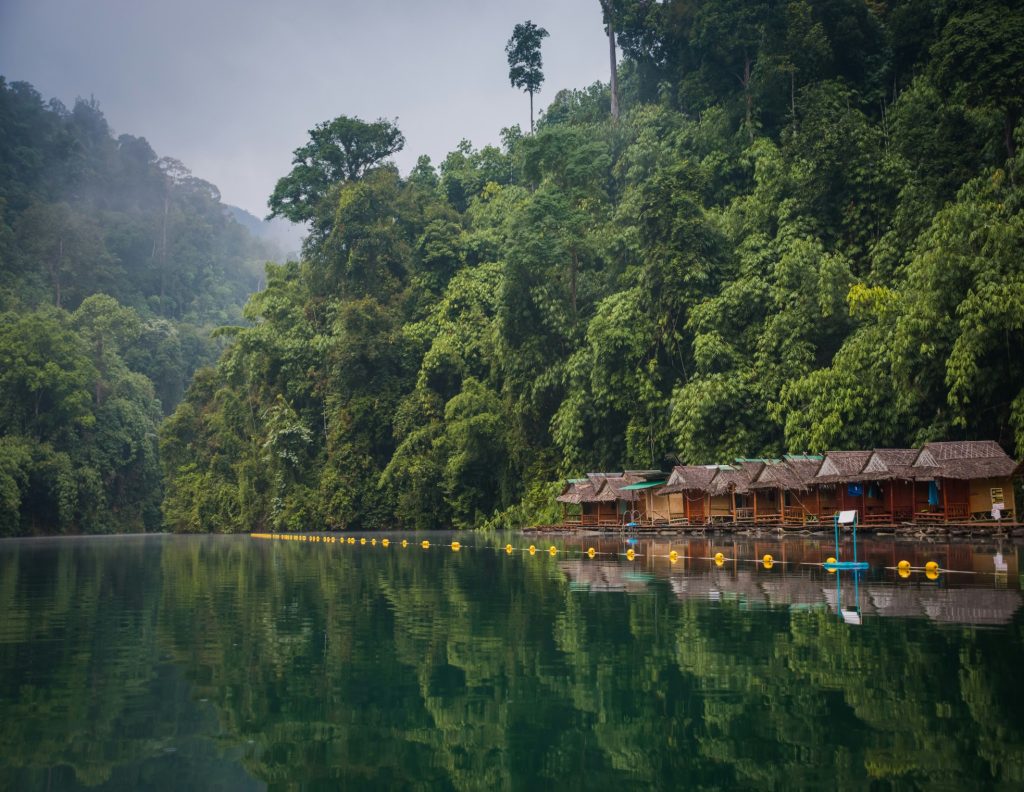
Getting ready to travel to Thailand for the first time? A treat is in store for you. This tropical paradise is famous for its white beaches, lively cities, golden temples, and friendly people. However, amid all the excitement, many first-time travelers often ask: Is Thailand safe for tourists? Absolutely! One of the most popular tourist destinations in Southeast Asia is Thailand. However, some locations provide an even more seamless and secure experience, particularly for first-time tourists. To help you travel wisely and without stress, this Thailand travel planner identifies the safest Places in Thailand for First-Time Visitors. These destinations are not only safe but also picturesque and easy to explore, whether you’re planning a family vacation, a couple’s getaway, or a solo trip. 6 Safest Places in Thailand for First-Time Visitors 1. Bangkok – The Secure Urban Jungle Bangkok, the capital of Thailand, is bustling. Nevertheless, it’s surprisingly safe for tourists, particularly if you limit your travel to well-known locations. Moreover, public transportation is dependable, and the city is well-policed. Most areas of town have 24/7 services, English-speaking residents, and modern hospitals. Cruise the Chao Phraya River, shop at Chatuchak Market, and visit temples like Wat Arun and Wat Phra Kaew. As a result, everything is accessible, and tourist areas are constantly monitored by police and CCTV. Why it’s safe: Excellent infrastructure and security Clearly marked tourist signs and transit-related mobile apps. Violent crime is rare. Pro Tip: Instead of hailing a cab during rush hour, take the BTS Skytrain or the MRT subway. It is safer, faster, and helps you avoid scams and traffic jams. 2. Chiang Mai – Peaceful, Cultural, and Tourist-Friendly Go north to Chiang Mai if you want Offbeat Thailand experiences. It is among the most charming cities in Thailand, known for its low crime rate and traveler-friendly atmosphere. The Old City is walkable and small. The locals are renowned for being peaceful and amiable, and the majority of the attractions are close to one another. For example, you’ll love the nearby elephant sanctuaries, ancient temples, and mountain views. Furthermore, Yi Peng (Lantern Festival), one of the nation’s premier festivals, is held in Chiang Mai. Why it’s safe: Low crime rate, particularly in the Old City A large number of long-term visitors and digital nomads Well-regulated local tours Pro Tip: Always reserve elephant encounters at morally sound establishments such as Elephant Nature Park. Avoid camps that offer rides—they often mistreat animals. 3. Phuket – Beach Bliss With Safety Infrastructure The largest island in Thailand, Phuket, is a popular first-time travel destination often featured in a Thailand first-time travel guide. It has plenty of nightlife, adventure tours, and beach resorts, but it also has the right safety measures in place. The majority of visitors stay in places with lifeguards, tourist police, and clearly marked routes like Patong, Kata, or Kamala. Furthermore, there are many healthcare facilities and English-speaking services, particularly in the vicinity of international clinics and Patong Hospital. Why it’s safe: A strong infrastructure for tourists Emergency support for legal or medical issues Well-guarded beaches and areas for nightlife. Pro Tip: Always keep an eye on your drinks and be vigilant at nightclubs. Only use Grab or registered taxis after dark. 4. Koh Samui – Island Peace with a Local Touch No Thailand first-time travel guide would be complete without Koh Samui.. It provides the ideal harmony of simplicity, luxury, and the natural world. Nevertheless, it is still serene even though it is a popular tourist destination. The roads are in good shape, the resorts are gated and secure, and the locals are friendly. For first-timers, places like Chaweng and Bophut are best. The island offers family-friendly activities, safe beaches, and plenty of water sports, making it one of the best cities in Thailand for tourists. Why it’s safe: A well-established tourism industry with clear signage. A calm nightlife and fewer scams. Coordinated airport and ferry services. Pro Tip: Skip renting a scooter unless you’re confident. Mishaps happen frequently. For quick rides, instead, use a songthaew, a local pickup taxi. 5. Ayutthaya – Historic Tranquility Near Bangkok Do you want to experience Authentic Thai culture away from the crowds? Bangkok is just 90 minutes away from Ayutthaya, a UNESCO World Heritage site. You can explore peaceful parks, riverbank temples, and historic ruins here. Therefore, it’s flat, safe, and enjoyable; most tourists rent bikes to explore. Ayutthaya has a lower crime rate than large cities. It’s well-liked by photographers and day trippers who appreciate the tranquil atmosphere. This spot often features in recommendations for safe places to visit in Thailand. Why it’s safe: Low population density Lack of tourist scams Open spaces and welcoming locals Pro Tip: Choose to go early in the morning or late in the afternoon. The crowds are smaller and the light is perfect for photography. 6. Hua Hin – Royal Elegance and Relaxed Vibes If you’re searching for a serene beach getaway, Hua Hin ought to be, particularly on your travel itinerary. This seaside city, which was once a royal retreat, is still elegant and serene. The atmosphere is laid back, and the beaches are clean. Its secure and leisurely lifestyle, favored by many retirees and expats, makes it one of the best cities in Thailand for tourists. It’s also easy to reach by train or bus from Bangkok. Why it’s safe: Quiet streets and little chaos at night. Well-liked by families and senior citizens. Vigorous police presence in tourist destinations. Pro Tip: Enjoy a sunset evening at Cicada Market, which offers fantastic local cuisine, live music, and artwork in a completely secure setting. Frequently Asked Questions Q1. Is Thailand safe for solo female travelers? Absolutely! Especially in spots like Chiang Mai and Hua Hin. However, just dress modestly and avoid walking alone late at night. Q2. Do I need a permit to visit certain areas? Yes, some areas in Thailand like national parks, marine parks, or border zones, may require a permit. Check local rules before visiting. Q3. Can
Best Leh Ladakh Itinerary for First-Time Visitors (2025)
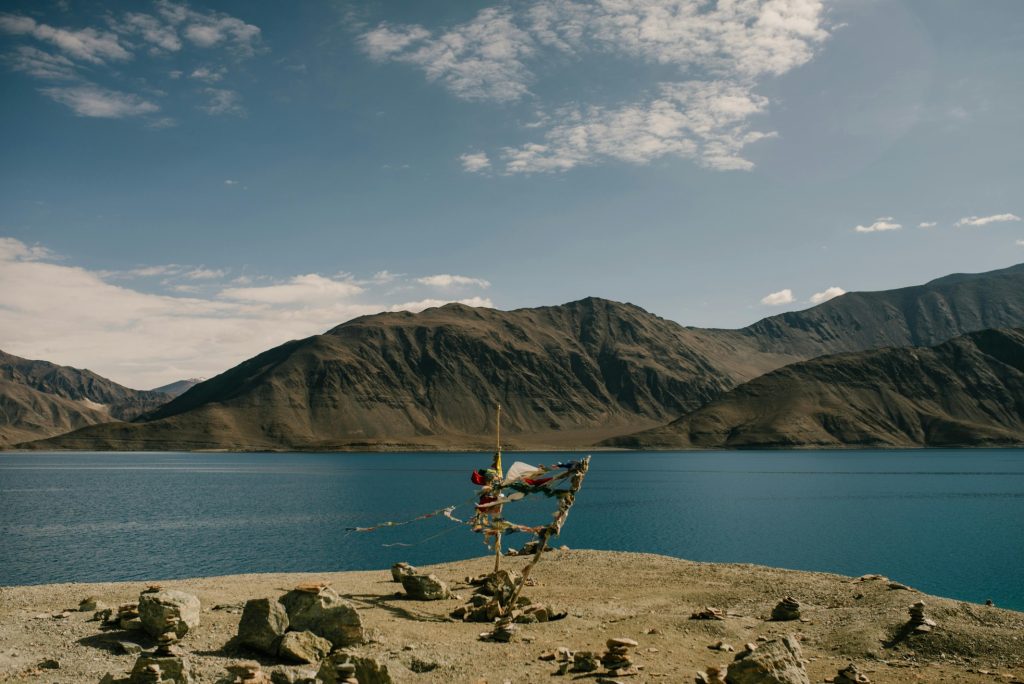
If you’re gearing up for your first-ever journey to Leh Ladakh, get ready for an unforgettable adventure. From exploring snow-capped peaks, high-altitude deserts, turquoise lakes, to old monasteries, it holds lifelong memories. Whether you’re dreaming of a wholesome Ladakh road trip or planning trekking, this Ladakh travel guide will help you. All in all, create the perfect Ladakh trip itinerary for 2025 as per your own preference. Choosing the Best Route to Ladakh: Our Top Recommendations The journey to Ladakh isn’t just a simple journey. In fact, it is as breathtaking as the destination itself. There are three primary routes to Leh, depending on your time constraints, preferred mode of transportation, and comfort: Manali to Leh Route: It is well-known for Rohtang Pass, Baralacha La, and Sarchu. Consequently, it is particularly suitable for thrill-seekers and those seeking a gradual ascent in elevation. Srinagar to Leh: The scenic drive from Srinagar to Leh passes through Sonamarg, Zoji La, and the ancient town of Kargil. Therefore, travelers looking for a comfortable ascent with fewer difficulties due to altitude will find it ideal. Flying to Leh: This is the fastest way to reach Ladakh and provides breathtaking Himalayan views. However, to prevent altitude sickness, it is imperative to acclimate as soon as possible after arrival. Our Recommendation for First-Time Visitors: If you’re visiting Ladakh for the first time, we recommend taking the Srinagar to Leh route by road. It not only provides a more comfortable and gradual altitude gain, but also lets you soak in the diverse beauty of Kashmir and Ladakh along the way. This helps your body adjust better and makes the journey smoother and more enjoyable—especially for beginners. Pro Tip: Additionally, take a different route on the way back and on the way out for diverse landscape’s beauty. Must-Visit Places in Leh Ladakh A first-timer’s Ladakh trip plan should strike a balance between the famous landmarks and the hidden gems. As a result, that is what makes your journey unforgettable. For instance, here are some must-see spots, each with unique charm and beauty: Pangong Tso: Throughout the day, the famous high-altitude lake’s hues shift from deep blue to emerald green. Moreover, spend the night in a camp by the lake to see the stunning sunrise over its glistening waters. Nubra Valley: A chilly desert surrounded by snow-capped mountains, this region is home to the rare double-humped Bactrian camels. Khardung La Pass: One of the world’s highest motorable roads, at over 17,500 feet. Consequently, it provides breathtaking views of the Karakoram and Zanskar ranges. Tso Moriri: A more sedate option to Pangong. In particular, this unusual lake is haven for birdwatchers, drawing uncommon species like bar-headed goose and black-necked crane. Thiksey & Hemis Monasteries: Beyond their religious significance, Thiksey and Hemis Monasteries are home to priceless Buddhist relics, historic murals, and lively festivals. Magnetic Hill: A fun and perplexing stop for any road tripper. Interestingly, this natural optical illusion makes your car seem to roll uphill on its own. Pro Tip: To prevent altitude sickness, begin your trip by taking in the sights of Leh before proceeding to higher elevations. Experiencing Ladakh Beyond Sightseeing An itinerary for Ladakh is more about embracing local culture and adventure than checking off ideal landmarks. Here are some meaningful and unforgettable things to do in Ladakh that will elevate your travel experience: Trekking in Ladakh: Stok Kangri, Markha Valley, and Sham Valley are well-traveled routes. River Rafting in Zanskar: An exhilarating way to witness the breathtaking gorges of Ladakh. Camping by High-Altitude Lakes: Ladakh offers unparalleled stargazing. Cultural Immersion: Take in traditional music and dance at a local celebration such as Hemis Tsechu. Pro Tip: To prevent last-minute disappointment, schedule activities in advance especially during the busiest Ladakh holidays (June–September). Crafting the Perfect Ladakh Travel Itinerary An ideal Ladakh tour schedule for first-time visitors strikes a balance between exploration, relaxation, and travel. Here’s a suggested Ladakh travel itinerary for first-timers that ensures you make the most of your journey without feeling rushed: Arrival and Acclimatization: To begin with, explore Leh Palace and Shanti Stupa during your first few days there. High-Altitude Excursions: Next, visit to Nubra, Pangong, or Tso Moriri for breathtaking Himalayan views and life-changing experiences. Cultural & Adventure Activities: Take part in trekking, rafting, or camel rides at Hunder Sand Dunes. In addition, visit monasteries like Hemis, Thiksey, and Diskit. Buffer Days: Lastly, add one or two extra days to your itinerary to account for unforeseen road conditions or weather. Pro Tip: Avoid cramming too many destinations because the real Ladakh’s beauty is best experienced at a slower pace. Travel Essentials for a Smooth Ladakh Trip The difficulties of traveling at high altitudes are frequently underestimated by first-time visitors. Therefore, before packing your bags, keep these essentials in mind: Packing: Sunscreen, sunglasses, sturdy trekking shoes, and layers of clothing. Health Precautions: Also, get acclimated, drink plenty of water, and bring some basic altitude sickness medication. Best Time to Visit: May to September for road trips; January to February for winter treks. Pro Tip: Since many places lack network coverage, download maps offline in advance. Inner Line Permits are needed for places like Nubra, Pangong, and Tso Moriri. FAQs Q1: How long should be my first Ladakh trip? 7–10 days is ideal for a comfortable pace. Q2: Is it safe to have a solo trip in Ladakh? Yes, certainly for solo travelers, it is indeed secure and well-connected. Q3: Is it possible to visit Ladakh during the winter season? Yes, but expect severe cold and restricted access. Q4: How much should a first trip to Ladakh typically cost? Depending on your mode of transportation, lodging, and season, it can cost anywhere between ₹15,000 and ₹35,000. Final Thoughts If planned smartly, then your Leh Ladakh trip will come out to be a once-in-a-lifetime experience. Every area of Ladakh offers something new to discover, from tranquil lakes like Pangong and Tso Moriri to Khardung La. Moreover, respect the area’s delicate ecology and take your time



